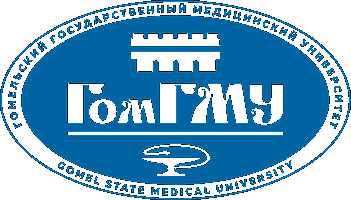Показать сокращенную информацию
Реконструкция дистальных анатомических частей носа — анализ косметических результатов
| dc.contributor.author | Иванов, С. А. | |
| dc.contributor.author | Бривков, Р. И. | |
| dc.contributor.author | Виракоон, Ч. А. А. Д. | |
| dc.date.accessioned | 2025-01-28T06:40:03Z | |
| dc.date.available | 2025-01-28T06:40:03Z | |
| dc.date.issued | 2024 | |
| dc.identifier.citation | Иванов, С. А. Реконструкция дистальных анатомических частей носа — анализ косметических результатов / С. А. Иванов, Р. И. Бривков, Ч. А. А. Д. Виракоон // Проблемы здоровья и экологии. – 2024. – Т. 21, № 2. – С. 38–45. | ru_RU |
| dc.identifier.uri | http://elib.gsmu.by/handle/GomSMU/15710 | |
| dc.description.abstract | Цель исследования. Проанализировать косметические результаты при реконструкции дефектов дистальных анатомических частей носа. Материалы и методы. Исследованы результаты 103 реконструкций у пациентов с приобретенными дефекта- ми наружного носа с утратой дистальных анатомических частей. Оценка косметических результатов выполнена с использованием 5-балльной шкалы опросника NAFEQ. Выполнено сравнение частоты осложнений и оценок в группах со срединной и боковой локализацией дефекта (33 и 70 пациентов соответственно) и в зависимости от способа реконструкции. Результаты. Частота осложнений при устранении срединных (4 случая, 12,1 %) и боковых дефектов (2 случая, 2,9 %) не имела значимого различия, р = 0,066. При срединных дефектах снижение оценок косметического результата чаще отмечали по показателям «кончик носа», «крыло носа», «спинка носа»; при боковых дефектах — «размер носового отверстия», «крыло носа», «спинка носа». Оценки кончика и спинки носа были значимо выше после устранения боковых дефектов, чем срединных, р = 0,004 и р < 0,001 соответственно. Не отмечено значимого различия в оценках косметических показателей «крыло носа» (р = 0,560) и «размер но- сового отверстия» (р = 0,990) при устранении срединных и боковых дефектов. Показатель «общий вид носа» не имел статистически значимого различия в группах, р = 0,129. Результаты по показателям «размер носовых отверстий», «цвет наружного носа», «общий вид носа» были статистически значимо выше при использовании пазл-лоскута по сравнению с альтернативными способами. Оценки показателя «кончик носа» были статистически значимо выше при реконструкции лобным лоскутом по сравнению с лоскутами из носа. Заключение. Частота осложнений при реконструкции дистальных субъединиц носа составила 5,8 % и не имела различия при срединных и боковых локализациях дефекта. Косметические результаты отличались при оценке отдельных показателей. Оценка общего вида носа не имела значимого различия при срединных и боковых локализациях дефекта. Использование пазл-лоскута и лобного лоскута приводит к лучшим результатам для отдельных субъединиц. | ru_RU |
| dc.description.abstract | Objective. To analyze cosmetic results in reconstruction of defects in the distal anatomical parts of the nose. Materials and methods. The results of 103 reconstructions in patients with acquired defects of the external nose with loss of distal anatomical parts were studied. The evaluation of cosmetic results was performed using a 5-point scale of the NAFEQ (Nasal Appearance and Function Evaluation Questionnaire). Complication rate and assessments in groups with median and lateral localization of the defect (33 and 70 patients, respectively) depending on the method of reconstruction were compared. Results. Complication rate in the reconstruction of median defects (4 cases, 12.1%) and lateral defects (2 cases, 2.9%) did not have a statistically significant difference (Fisher’s exact two-tailed test, p=0.066). With median defects, a decrease in assessment of cosmetic results was more often noted in indications of “nasal tip”, “nasal alar”, and “nasal back”; with lateral defects – “nostril size”, “nasal alar”, “nasal back”. The estimates of the tip and back of the nose were statistically significantly higher after the reconstruction of lateral defects than median ones, p=0.004 and p<0.001, respectively. There was no statistically significant difference between the groups in the estimates of the nasal alar and the nostril size. The indicator “total appearance of the nose” did not have a statistically significant difference in the groups, p=0.129. The results for the indicators “nostrilя size”, “color of the outer nose”, “total appearance of the nose” were statistically significantly higher when using a puzzle flap compared with alternative methods. The estimates of the “nasal tip” index were statistically significantly higher following reconstruction with a frontal flap compared with nasal flaps. Conclusion. The complication rate in the reconstruction of the distal subunits of the nose was 5.8% and had no difference in the median and lateral localizations of the defect. Cosmetic results differed when assessed by individual measures. The assessment of the total appearance of the nose had no significant difference in the median and lateral localizations of the defect. The use of a puzzle flap and a forehead flap presented better results for the particular subunits. | |
| dc.language.iso | ru | ru_RU |
| dc.publisher | ГомГМУ | ru_RU |
| dc.subject | реконструкция наружного носа | ru_RU |
| dc.subject | дефект наружного носа | ru_RU |
| dc.subject | субъединицы наружного носа | ru_RU |
| dc.subject | косметический результат | ru_RU |
| dc.subject | лоскуты из щеки | ru_RU |
| dc.subject | лоскуты из носа | ru_RU |
| dc.subject | лобный лоскут | ru_RU |
| dc.subject | nasal reconstruction | ru_RU |
| dc.subject | defect of outer nose | ru_RU |
| dc.subject | nasal subunits | ru_RU |
| dc.subject | cosmetic outcome | ru_RU |
| dc.subject | cheek flap | ru_RU |
| dc.subject | nasal flap | ru_RU |
| dc.subject | forehead flap | ru_RU |
| dc.title | Реконструкция дистальных анатомических частей носа — анализ косметических результатов | ru_RU |
| dc.type | Article | ru_RU |
| dc.identifier.doi | https://doi.org/10.51523/2708-6011.2024-21-2-05 |
Файлы данного ресурса
Данный элемент включен в следующие коллекции
-
Том 21, № 2 [20]
